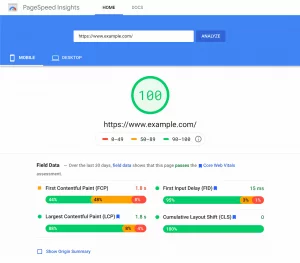Text formatting in HTML and CSS is not just an aesthetic choice—it’s a crucial element of web development that can directly impact user engagement and comprehension. Studies show that 75% of users admit to scanning webpages instead of reading every word, making effective text formatting essential for capturing attention and guiding users through content. Well-formatted text doesn’t just improve readability; it transforms the way users interact with your website, turning chaotic blocks of text into clear, digestible sections.
In today’s digital world, where the average attention span is just 8 seconds, the first impression your content makes is critical. Proper formatting ensures that users can quickly find and absorb the information they need, leading to a more user-friendly experience. Whether it’s through bold headings, concise paragraphs, or thoughtfully spaced lists, good text formatting helps organize the flow of information, making it more approachable and engaging.
HTML and CSS for Web Designers: Formatting Text for Impact
HTML (HyperText Markup Language) and CSS (Cascading Style Sheets) are two of the foundational technologies used in web development, and they work together to structure and style the content of web pages. Understanding these technologies is crucial for anyone looking to create well-designed and functional websites, particularly when it comes to formatting text.
HTML (HyperText Markup Language) is the standard markup language used to create and organize the content of a web page. It provides the structure by defining elements such as headings, paragraphs, lists, and links. In terms of text formatting, HTML defines how text is grouped and organized within the page, which is essential for giving content meaning and creating a logical flow. For instance, HTML tags like <h1> through <h6> are used to define headings, while <p> is used to mark paragraphs, and <ul> or <ol> creates ordered or unordered lists.
While HTML structures the content, CSS (Cascading Style Sheets) is used to define how the content should be displayed visually. CSS allows you to control the appearance of text, such as its size, color, font, spacing, and alignment. By separating the structure (HTML) from the presentation (CSS), CSS provides flexibility and control over the design without affecting the underlying content.
Why HTML and CSS Are Important for Text Formatting
Together, HTML and CSS provide a complete solution for text formatting on web pages. HTML organizes and structures the content, while CSS enhances the appearance and layout. Without HTML, there would be no way to define the text or structure it meaningfully. Without CSS, the text would appear in its default, unstyled form, which is typically plain and unattractive.
Here’s why both are important for effective text formatting:
- Separation of Structure and Presentation: HTML provides the content’s structural foundation, while CSS handles the design and styling. This separation makes web development more flexible and maintainable. You can update the look of a website without touching its content, or vice versa, without affecting the other.
- Improved Readability and User Experience: Well-formatted text with appropriate font sizes, spacing, and alignment is easier to read. A page with clear headings, well-spaced paragraphs, and contrasting text color will engage users better than a page with poorly formatted text.
- Consistency Across Devices: CSS allows for responsive design, meaning text can automatically adjust to fit various screen sizes, from desktops to smartphones. Without CSS, text would be rigidly displayed, potentially leading to unreadable content on smaller screens.
- SEO and Accessibility: HTML also plays a role in search engine optimization (SEO). Properly structured headings and paragraphs help search engines understand the content hierarchy and relevance. Moreover, using HTML tags correctly, such as alt text for images or proper semantic elements, improves accessibility for users with disabilities, ensuring your text is readable by screen readers.
Also Read: Mastering HTML Language: A Roadmap To Building Incredible Websites
Tutorial For Text Formatting in HTML and CSS
1. Setting Up Your HTML Document
Before you start formatting text, you’ll need to set up your HTML document. Chalk out a new HTML file and add the following basic structure:
<!DOCTYPE html>
<html>
<head>
<title>Text Formatting Tutorial</title>
<link rel="stylesheet" type="text/css" href="styles.css">
</head>
<body>
<!-- Your content goes here -->
</body>
</html>The fundamental framework encompasses the HTML5 doctype declaration and establishes a connection to an external CSS file named “styles.css,” which is where we will specify our text formatting styles.
- The <!DOCTYPE html> declaration is the document type declaration for HTML5. It informs the browser that this is an HTML5 doc.
- <html>: It is signified as the root element of an HTML page.
- <head>: It contains metadata about the document, like the page title and links to external resources like CSS stylesheets.
- <title>: It sets the title of the web page, which pops in the browser’s title bar or tab.
- <link>: It is used to link an external CSS file (styles.css) to your HTML document.
- <body>: This is where the main body of your web page resides.
2. Using HTML Tags for Text Formatting
HTML offers six levels of headings in text formatting, from <h1> (the largest and most imperative) to <h6> (the smallest). Use them to structure your content and add hierarchy to your text.
<h1>This is a Heading 1</h1>
<h2>This is a Heading 2</h2>
<!-- ... -->
<h6>This is a Heading 6</h6><h1> to <h6>: These tags represent different levels of headings. Use them to structure your content hierarchically, with <h1> being the most important and <h6> the least important.
Paragraphs
Use the <p> tag to create paragraphs of text. Paragraphs are block-level elements, meaning they start on a new line and create a visual separation between content.
<p>This is a paragraph of text. You can format it using CSS.</p>Text Styling
To add emphasis or style to text, you can use tags like <em> for emphasis and <strong> for strong importance.
<p>This text is <em>emphasized</em> and this text is <strong>strongly emphasized</strong>.</p><em> is used to emphasize text, typically rendering it in italics, while <strong> is used for strong emphasis, often displayed as bold text. These tags provide semantic meaning to the text.
Lists
HTML provides ordered and unordered lists.
<ul>
<li>Item 1</li>
<li>Item 2</li>
</ul>
<ol>
<li>Item 1</li>
<li>Item 2</li>
</ol><ul> is for creating unordered lists (bulleted lists), and <ol> is for ordered lists (numbered lists). Use <li> within these lists to define list items.
3. Using CSS for Text Formatting
To style your text further, you’ll need CSS. Create a file named styles.css and link it to your HTML file, as shown earlier.
Font Properties
Change font properties such as family, size, and color using CSS.
p {
font-family: Arial, sans-serif;
font-size: 16px;
color: #333;
}font-family: Specifies the font family to be used for the selected elements. It can include a list of font names to provide fallback options.
font-size: Sets the size of the text.
color: Defines the color of the text.
Text Alignment
You can align text within its container using the text-align property.
h1 {
text-align: center;
}text-align: Determines the horizontal alignment of text within its container. Common values include left, center, right, and justify.
Text Decoration
Change text decoration like underline or overline with text-decoration.
a {
text-decoration: underline;
}text-decoration: Controls decorations like underlines and overlines. It can be set to values like underline, overline, line-through, or none to remove any decoration.
Text Transform
Change the case of text using text-transform.
h2 {
text-transform: uppercase;
}text-transform: Alters the case of text. It can be set to values like uppercase, lowercase, or capitalized to change the appearance of the text.
4. Combining HTML and CSS
Now, apply the CSS styles to your HTML elements by selecting the appropriate HTML tags and applying your CSS properties.
CSS Selectors
CSS selectors (e.g., p, h1, .centered) are used to target specific HTML elements for styling. Classes (e.g., .centered, .emphasized, .link) are preceded by a period (.) in CSS to select elements with specific class attributes.
<h1 class="centered">Welcome to My Website</h1>
<p class="emphasized">This is some important information.</p>
<a href="#" class="link">Visit our Blog</a>Applying Styles
CSS rules inside your styles.css file target specific HTML elements and apply styling properties to them. For example, .centered is used to center-align text, .emphasized makes text bold, and .link changes the color and adds an underline to links.
.centered {
text-align: center;
}
.emphasized {
font-weight: bold;
}
.link {
color: blue;
text-decoration: underline;
}
Step 5: Responsive Text Formatting for Different Devices
The final step in the process is ensuring that your text remains readable and well-formatted across a range of devices, from desktop computers to mobile phones. To achieve this, you can use media queries in CSS to adapt text formatting based on screen size.
- Media Queries: A media query allows you to apply different styles depending on the screen width or other conditions.cssCopy
h1 { font-size: 36px; } @media (max-width: 768px) { h1 { font-size: 24px; /* Reduces font size on smaller screens */ }
This ensures that the text on your site will adjust to fit smaller screens, improving readability on mobile devices.
Creating Visually Stunning Web Text: HTML and CSS Tips
Mastering text formatting in HTML and CSS is an essential skill for any web developer.
Whether you’re designing simple paragraphs or creating complex text layouts, HTML and CSS offer the flexibility to enhance the readability and overall aesthetic of your website. With these techniques, you can create user-friendly content that looks great and engages visitors, helping your website stand out in a crowded digital space.
FAQs on Text Styling Secrets for HTML and CSS
What is the difference between the <em> and <strong> tags in HTML?
- The
<em>tag is used to emphasize text, typically rendering it in italics. It conveys emphasis to both users and search engines. - The
<strong>tag indicates that the text is of strong importance and is typically rendered in bold.
What is the best way to use custom fonts in my web design?
You can use custom fonts in CSS by either importing them from services like Google Fonts or using the @font-face rule to host your own fonts.
How do I prevent text from overflowing its container in CSS?
To prevent text from overflowing its container and to create a more polished layout, use the word-wrap or overflow properties:
word-wrap: break-word;will force long words to break and wrap onto the next line when necessary.- You can also use
overflow: hidden;to hide any text that exceeds the boundaries of its container.



